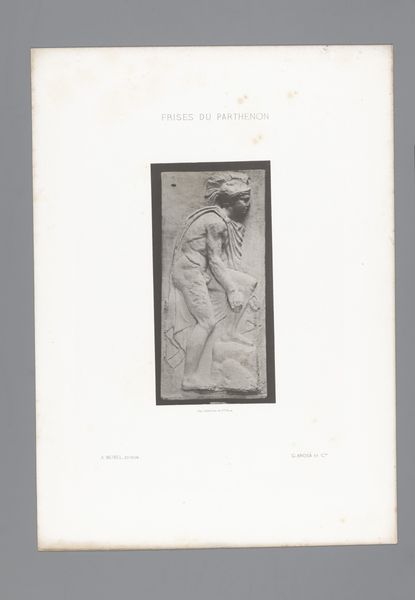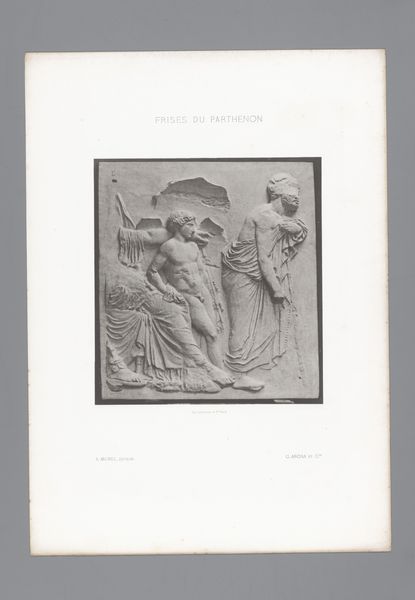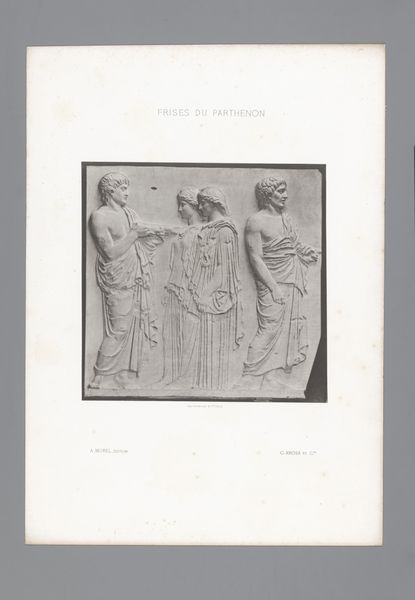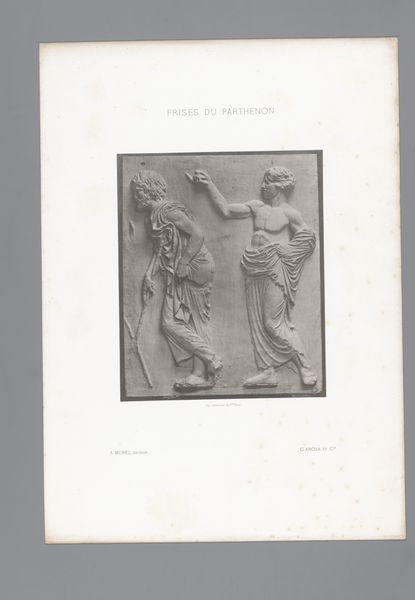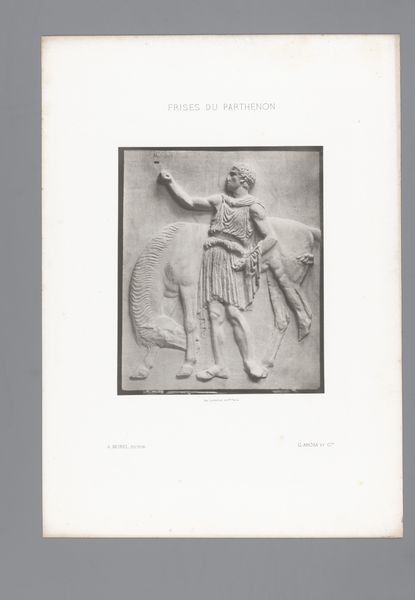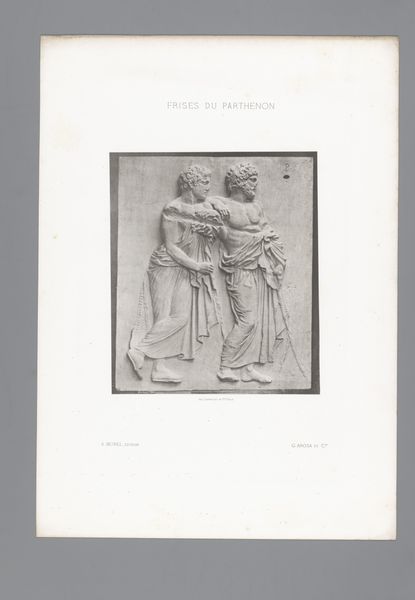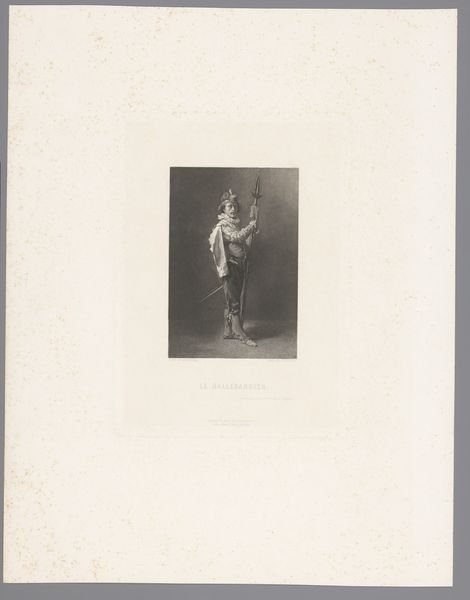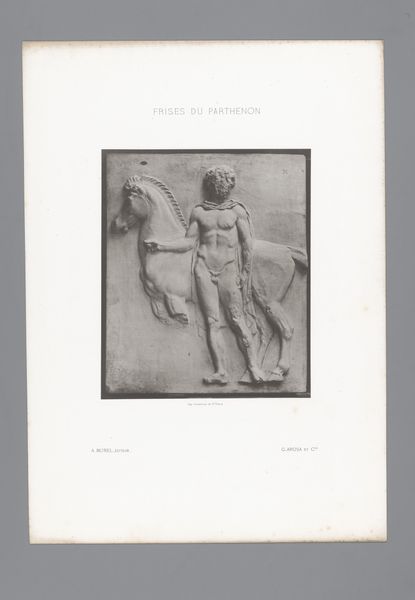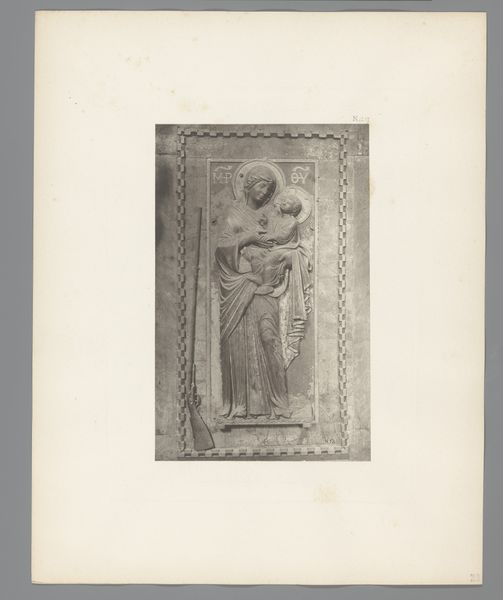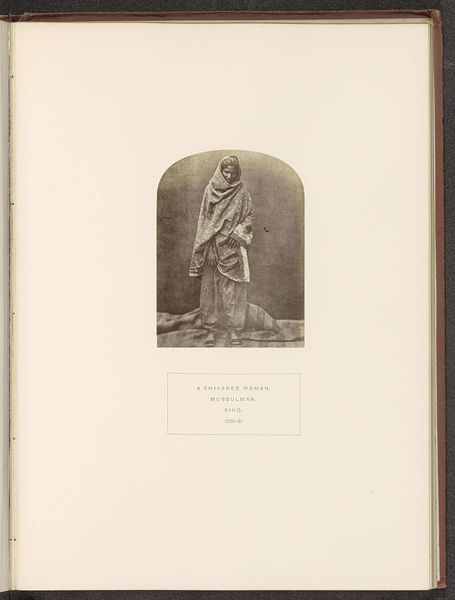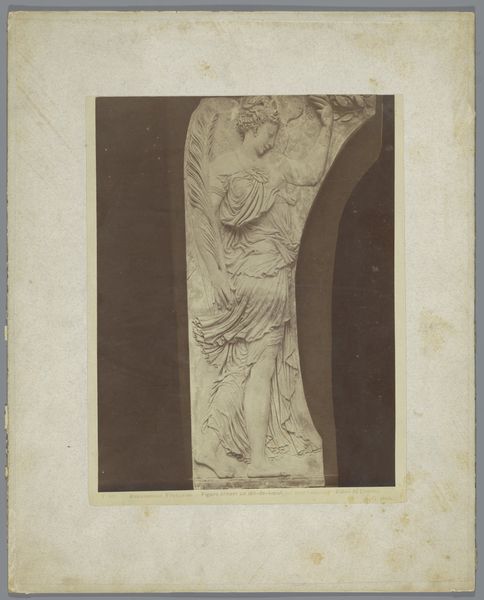
print, relief, paper, engraving
#
portrait
# print
#
greek-and-roman-art
#
relief
#
figuration
#
paper
#
ancient-mediterranean
#
history-painting
#
engraving
Dimensions: height 230 mm, width 122 mm
Copyright: Rijks Museum: Open Domain
Editor: This print, titled "Deel van het fries van het Parthenon in Athene, afgebeeld een man", is based on a section of the Parthenon frieze and dates from before 1868. It’s credited to G. Arosa et Cie. The figure is powerful, but also somehow burdened. What do you see in this piece, particularly regarding how it connects to Greek cultural memory? Curator: It’s more than just a record, isn't it? Consider how this single male figure, meticulously rendered, acts as a fragment of a lost whole. Each figure within the frieze, and the frieze itself, told a story—a narrative of civic pride, religious devotion, and cultural identity for Athenians. Notice how even in isolation, his posture carries the weight of that narrative. Editor: So, it’s not just about the individual, but about the larger story he represents? Curator: Exactly! And what symbols do you observe, what clues tie this figure to a specific cultural understanding of manhood or civic duty? The drapery, for instance – suggesting a status or role in a ritual? His muscularity, evoking an ideal of physical and moral strength tied to the Athenian citizen? This representation participates in and reinforces a broader cultural script. What do you think of its survival through reproduction? Editor: I suppose that by reproducing this section, it extends the cultural memory. The burden shifts, from the figure himself, to how later cultures chose to represent and remember that ideal. Curator: Precisely! It's about the echo of the past in the present, how images continue to shape our understanding of ourselves and our history. Perhaps he’s more than burdened; he's a carrier. Editor: I see him differently now, less an individual, more a vessel for the values of a civilization. Thanks!
Comments
No comments
Be the first to comment and join the conversation on the ultimate creative platform.
